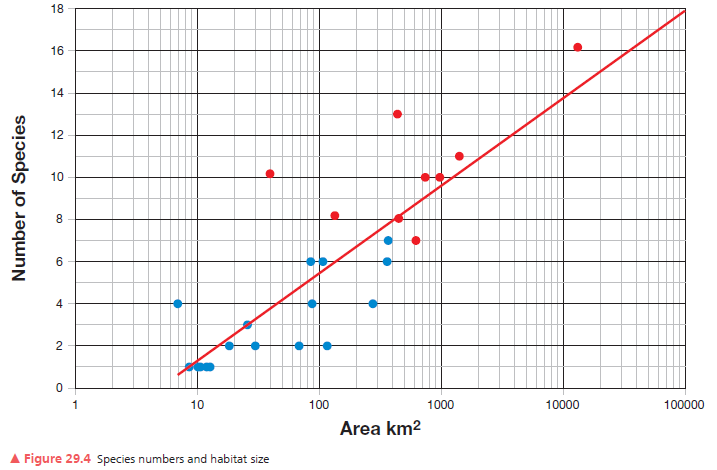How large is the largest park? How many species does it support? How many species would you expect to find in a park half that size? What percentage reduction is this over the original population?

Use Figure 29.4 and the trend line to answer the question.
11134 km2. 16 spp. 5567 km2 should support 12.5 spp, which is a 22% reduction.
You might also like to view...
Why might this be a poor estimate of the size of the 100-year flood?
What will be an ideal response?
Topsoil plays an important role in the ecosystem service of ____.
A. biodiversity B. ecosystems C. natural resources D. win-win solutions E. nutrient cycling
Using this diagram of the hydrologic cycle, identify three locations where the hydrologic sphere is interacting with one of the other three spheres. Match the correct labels to the correct spaces for those processes
A) Atmospheric & Geologic Spheres B) Hydrologic & Geologic Spheres C) Hydrologic & Atmospheric Spheres 1) Next to the Evaporation arrow 2) Next to the Precipitation arrow 3) Next to the Runoff arrow
Transpiration is:
A) the type of bond that holds water molecules together. B) the return of water to the oceans via rivers. C) the process by which plants release water into the atmosphere. D) the movement of groundwater under Earth's surface.